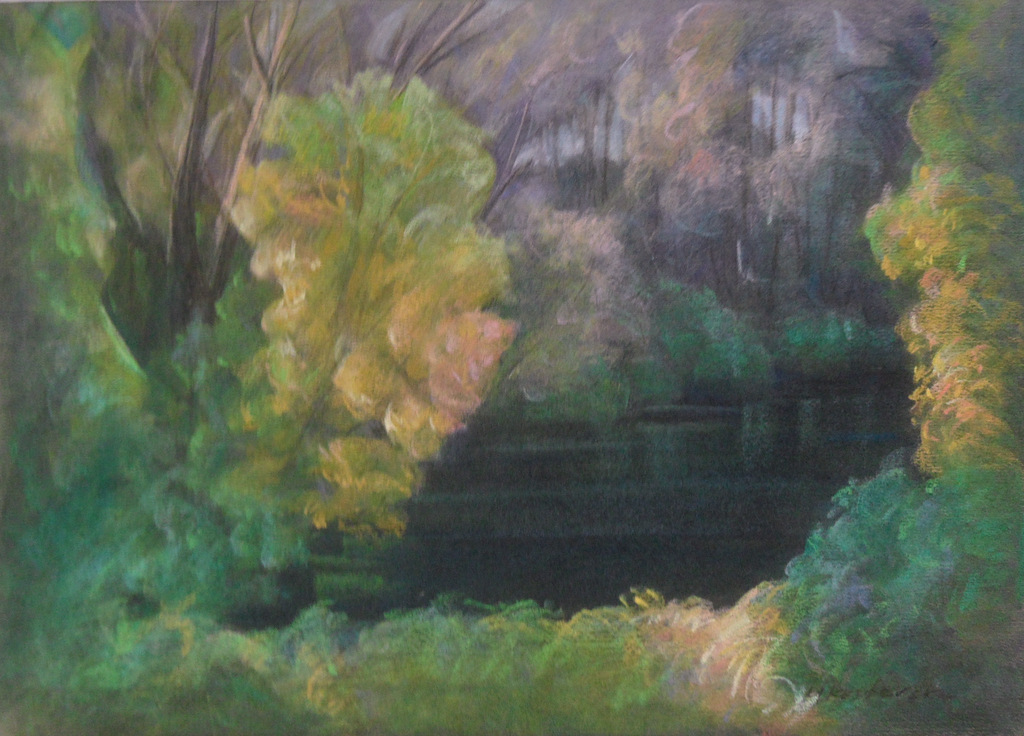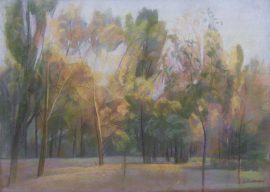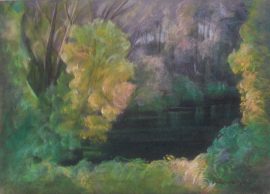Mirjana Krstevska was born in 1955, in Kacarevo, town not far from Belgrade. She graduated from the Belgrade Academy of Fine Arts, Department of Painting, in 1980. Mirjana completed her postgraduate studies in 1983. She has been a member of the Serbian Association of Fine Arts since 1981 and has the status of free artist since 1980. During three decades of her professional life, she has had about 20 individual exhibitions and dozens of group ones. She has received many recognitions for her contribution to the arts and the City of Belgrade assigned her the status of a prominent artist in 2006. Her paintings can be found in many private collections and in many museums.
As the artist herself likes to say, she has dedicated her entire opus to the imagery of Belgrade, the motifs of its architecture and the landscapes along the Danube and Sava, the rivers upon which Belgrade was built. She is a passionate observer of the sky over Belgrade, the mood and the light that changes throughout the seasons. She is tireless in paining the scenes of Kalemegdan, the port, the Cathedral Church of St. Michael, the War Island, every time with new elements and details.

Having spent one part of her life in Zemun, she grew to love the Danube and the typical riverside landscape. Those are paintings of rich, tropical flora, where everything thrives in green under the hot July sun. Typical species of trees and grasses that grow along the river banks are immediately recognizable and one can almost feel the heat and the humidity in the air on a hot summer or autumn day. Treetops full of leaves shine sporadically with their silvery-white glow, often hiding completely the sky and the horizon. The trees mirror in green river waters, creating picturesque reflections of their many shapes. The paintings often feature a warmly-coloured tree that breaks and enriches the infinite gradation of the greens. Tree trunks and branches are clearly defined against fluffy and soft foliage. It is here that she paints a tree or a branch in a linear manner, and this is where we see the full skill and artfulness of an experienced drawer.
Her paintings of river scenes are mostly done in dry pastels, which offer a wide range of possibilities, textures and colours. The colours in this particular technique are never too intensive and they blend easily with the other coloured surfaces of a painting. The process of painting in dry pastel results in a piece that maintains its freshness and lightness that is hard to achieve outside of the watercolour technique. On the other hand, the coloristic abundance and the refined hues can only be compared with the oil painting technique.
Mirjana’s scenes of the river and the flora that thrives on its banks will remind us that we too, somewhere in our memory or in our consciousness, carry those same impressions of those scapes. We will certainly remember them the next time we take a walk along a river on the plains.

